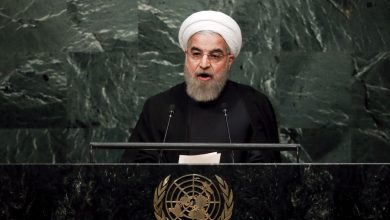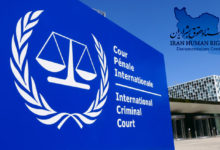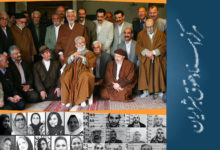[1] See, e.g., Beth Van Schaack, Crimen Sine Lege: Judicial Lawmaking at the Intersection of Law and Morals, 97 Geo. L.J. 119, 163-63 (2008). Crimes against humanity, however, is an enumerated offense triggering subject matter jurisdiction under the Rome Statute of the International Criminal Court. Rome Statute of the International Criminal Court art. 7, entered into force July 1, 2002, 2187 U.N.T.S. 90 [hereinafter Rome Statute].
[2] Rome Statute art. 7, supra note 1; see also Antonio Cassese, International Criminal Law 91 (2003); Antonio Cassese, Paola Gaeta and John R.W.D. Jones, The Rome Statute of the International Criminal Court: A Commentary 373 (2002).
[3] In any case, the International Criminal Court’s temporal jurisdiction runs from July 1, 2002; it cannot prosecute crimes that occurred before that date. Rome Statute art. 11, supra note 1.
[4] Customary international law, one of the oldest and primary sources of international law, derives from widespread and long-held state practice; it may but need not be reflected in positive law like treaties. See, e.g., Cassese, supra note 2, at 28-30. Some principles of customary international law, including the prohibitions on crimes against humanity, slavery and genocide, are so fundamental that no state may exempt itself from compliance with them. See Karen Parker et al., Jus Cogens: Compelling the Law of Human Rights, 12 Hastings Int’l & Comp. L. Rev. 411 (1989). The Rome Statute codifies the customary international law prohibition on crimes against humanity as it has developed since the Second World War. Rome Statute arts. 5-8, supra note 1. The Nuremberg Charter provided the first definition of “crimes against humanity,” and the first prosecutions of individuals who committed crimes against humanity occurred during the operation of that tribunal. See Charter of the International Military Tribunal, in Agreement for the Prosecution and Punishment of the Major War Criminals of the European Axis art. 6(3), August 8, 1945, 58 Stat. 1544, E.A.S. No. 472, 82 U.N.T.S. 280. More recently, the U.N. Security Council created the International Criminal Tribunal for the Former Yugoslavia (ICTY) in 1993, and the International Criminal Tribunal for Rwanda (ICTR) in 1994 to prosecute, among other things, crimes against humanity committed during the conflicts in those regions. See Statute of the International Criminal Tribunal for the Former Yugoslavia, annexed to Resolution 827, SC Res 827, UN SCOR, 48th sess., 3217th mtg., UN Doc S/RES/927 (1993); Statute of the International Criminal Tribunal for Rwanda, annexed to Resolution 955, SC Res 955, UN SCOR, 49th sess., 3453rd mtg., UN Doc S/RES/955 (1994). Because those tribunals greatly elaborated on the legal understanding of crimes against humanity, this report draws heavily on their jurisprudence.
[5] Rome Statute art. 7(1), supra note 1.
[6] Id. art. 7(2), supra note 1. The Statute also lists other acts, not relevant to our analysis, that leading scholars contend are not prohibited by customary international law. See, e.g., Cassese, supra note 2 at 94.
[7] Rome Statute art. 7(2)(a), supra note 1; see also Prosecutor v. Kunarac et al., Case No. IT-96-23-T & IT-96-23/1-T, Judgment, ¶ 415 (Feb. 22, 2001).
[8] See Guénaël Mettraux, International Crimes and the Ad Hoc Tribunals 161 (2005) (providing several examples of ICTY and ICTR cases holding that attacks on small communities may amount to crimes against humanity).
[9] Prosecutor v. Mrksic et al., Case No. IT-95-13-R61, Review of the Indictment Pursuant to Rule 61 of the Rules of Procedure and Evidence, ¶ 30 (Apr. 3, 1996).
[10] Prosectuor v. Kunarac et al., Case No. IT-96-23-A & IT-96-23/1-A, Judgment, ¶ 91 (June 12, 2002); see also Mettraux, supra note 8, at 164.
[11] See Prosecutor v. Limaj et al., Case No. IT-03-66-T, Judgment, ¶ 186 (Nov. 30, 2005).
[12] For a general discussion of the crimes against humanity charge in international law, see Iran Human Rights Documentation Center, Condemned by Law: Assassination of Political Dissidents Abroad 28-33 (2008) [hereinafter Condemned by Law].
[13] Prosecutor v. Semanza, Case No. ICTR-97-20-T, Judgment and Sentence, ¶ 330 (May 15, 2003).
[14] Prosecutor v. Akayesu, Case No. ICTR-96-4-T, Judgment, ¶ 582 (Sept. 2, 1998). The existence of war or “armed conflict” is generally not a required element of crimes against humanity. Prosecutor v. Dusko Tadic, Case No. IT-94-1-A, Decision on the Defence Motion for Interlocutory Appeal on Jurisdiction, ¶ 141 (Oct. 2, 1995).
[15] The U.N. Special Rapporteur on Summary or Arbitrary Executions’ mandate requires it to pay “special attention” to extrajudicial killings carried out against individuals engaged in “peaceful activities in defense of human rights.” [15] Civil and Political Rights, Including the Questions of Disappearances and Summary Executions (Report of the Special Rapporteur of Dec. 22, 2004) paras. 7(f), U.N. Doc. E/CN.4/2005/7 (Dec. 22, 2004). See also infra note 50 and accompanying text (discussing the role of the Special Rapporteur on Summary or Arbitrary Executions).
[16] See e.g., Press Release, Islamic Republic of Iran – Permanent Mission to the United Nations, Bahaism Per Se No Ground For Persecution – Ayatollah Mussavi (Nov. 27, 1985) (on file with the Iran Human Rights Documentation Center). The document states: “Bahaism is not specifically a religious cult but rather a political party committed to the United States and Israel and devoted to furthering their predatory goals in Iran. Baha’ism was introduced in Iran as a cult with mainly political implications in mid 19th century by groups believed to have been furthering colonialistic goals of the British Government in the country.” Id. On other occasions, however, the Iranian Government has referred to the Bahá’í community as a subversive or misguided sect, suggesting that it acknowledges the civilian nature of the community. See, e.g., Iran Human Rights Documentation Center, A Faith Denied: The Persecution of the Bahá’ís of Iran note 297 and accompanying text (2006) [hereinafter A Faith Denied].
[17]Prosecutor v. Mrksic et al., Case No. IT-95-13-R61, Review of the Indictment Pursuant to Rule 61 of the Rules of Procedure and Evidence, ¶ 29 (Apr. 3, 1996).
[18]Prosectuor v. Kunarac et al., Case No. IT-96-23-A & IT-96-23/1-A, Judgment, ¶ 90 (June 12, 2002); see also A Faith Denied, supra note 16, at 23-35.
[19] Guénaël Mettraux, Crimes Against Humanity in the Jurisprudence of the International Criminal Tribunals for the former Yugoslavia and Rwanda, 43 Harv. Int’l L.J. 237, 255 (2002).
[20] See A Faith Denied, supra note 16, at 2 (2006).
[21] Prosecutor v. Akayesu, Case No. ICTR-96-4-T, Judgment, ¶ 579 (Sept. 2, 1998) (noting that the requirement is disjunctive); see also Prosecutor v. Dusko Tadic, 141 Case No. IT-94-1-T, Judgment, ¶¶ 646, 648 (May 7, 1997); Prosectuor v. Kunarac et al., Case No. IT-96-23-A & IT-96-23/1-A, Judgment, ¶ 94 (June 12, 2002); Prosectuor v. Blaskic, Case No. IT-95-14-T, Judgment ¶ 203 (Mar. 3, 2000).
[22] Prosecutor v. Akayesu, Case No. ICTR-96-4-T, Judgment, ¶ 579 (Sept. 2, 1998).
[23] Prosecutor v. Akayesu, Case No. ICTR-96-4-T, Judgment, ¶ 580 (Sept. 2, 1998); see also Prosectuor v. Kunarac et al., Case No. IT-96-23-A & IT-96-23/1-A, Judgment, ¶ 94 (June 12, 2002) (citing Prosecutor v. Tadic, Case No. IT-96-1-T, Judgment, ¶ 648 (May 7, 1997)). The Trial Chamber in the Kunarac case noted that “[p]atterns of crimes – that is the non-accidental repetition of similar criminal conduct on a regular basis – [is] a common expression of such systematic occurrence.” Prosecutor v. Kunarac et al., Case No. IT-96-23-T & IT-96-23/1-T, Judgment, ¶ (Feb. 22, 2001).
[24] Prosecutor v. Tadic, Case No. IT-96-1-T, Judgment, ¶ 653 (May 7, 1997); Prosecutor v. Akayesu, Case No. ICTR-96-4-T, Judgment, ¶ 580 (Sept. 2, 1998).
[25] Prosecutor v. Jelisic, Case No. IT-95-10-T, Judgment, ¶ (Dec. 14, 1999); Prosecutor v. Akayesu, Case No. ICTR-96-4-T, Judgment, ¶ 580 (Sept. 2, 1998); Prosectuor v. Kunarac et al., Case No. IT-96-23-A & IT-96-23/1-A, Judgment, ¶ 94 (June 12, 2002); Prosecutor v. Blaskic, Case No. IT-95-14-T, ¶ 101 (Mar. 3, 2000); Prosecutor v. Limaj et al., Case No. IT-03-66-T, Judgment, ¶ 183 (Nov. 30, 2005); Prosecutor v. Ntakirutimana, Case No. ICTR-96-10 & ICTR-96-17-T, Judgment, ¶ 804 (Feb. 21, 2003); Prosecutor v. Niyitegeka, Case No. ICTR-96-14-T, Judgment, ¶ 439 (May 16, 2003).
[26] See A Faith Denied, supra note 16, at 27-33.
[28] See, e.g., A Faith Denied, supra note 16, Appendices 3-9 (detailing other official government actions taken against members of the Bahá’í community).
[30] See id. at 43-45; see also id., Appendix 1.
[31] Rome Statute art. 7(1)(a), supra note 1.
[32] See, e.g., Prosecutor v. Blagojevic and Jokic, Case No. IT-02-60-T, Judgment, ¶ 556 (Jan. 17, 2005).
[33] See generally A Faith Denied, supra note 16.
[35]United Nations High Commissioner for Refugees, Chronologies of Bahai’s in Iran, 2004 http://www.unhcr.org/refworld/country,,MARP,,IRN,,469f38a3c,0.html (last visited Oct. 25, 2008).
[36] U.N. Human Rights Comm., Summary Record of the 125 2nd Meeting at 3, U.N. Doc CCPR/C/SR.1251 (June 27, 1994).
[37] See generally Iran Human Rights Documentation Center, Community Under Siege: The Ordeal of the Bahá’ís of Shiraz (2007) [hereinafter Community Under Siege].
[41] Id. at 38 (arguing that the executions had to be approved by Tehran).
[42] See International Covenant on Civil and Political Rights art. 6(1), Dec. 16, 1966, 999 U.N.T.S. 171 [hereinafter ICCPR]; see also Condemned by Law, supra note 12, at 11-19 (providing an in-depth account of extrajudicial killings and protections guaranteed in the International Covenant on Civil and Political Rights).
[43] ICCPR art. 2, supra note 42; see also generally International Covenant on Economic, Social and Cultural Rights, U.N. Doc. U.N. Doc. A/6316 (1966), 993 U.N.T.S. 3, entered into force Jan. 3, 1976.
[44] ICCPR art. 2, supra note 42.
[45] Article 6 of the ICCPR provides: “Every human being has the inherent right to life. This right shall be protected by law. No one shall be arbitrarily deprived of his life.” ICCPR art. 6, supra note 42. For a more in-depth legal analysis of Article 6 of the ICCPR, see Condemned by Law, supra note 12, at 12-14.
[46] Article 9 of the ICCPR provides that member states must provide substantive and procedural “due process” before they limit, interfere with or otherwise extinguish an individual’s right to life (or liberty). ICCPR art. 9, supra note 42. Specifically, Article 9 provides an overarching “right to liberty and security of person,” which prohibits arbitrary and unlawful arrests, prolonged detentions or deprivation of liberty by a member state or its security forces. Id. For a more in-depth legal analysis of Article 9 of the ICCPR, see Condemned by Law, supra note 12, at 14-18.
[47] Article 14 of the ICCPR prohibits the extinguishing of an individual’s right to life absent a “fair hearing.” ICCPR art. 14, supra note 42. It provides that all individuals are “entitled to a fair and public hearing by a competent, independent and impartial tribunal established by law.” Id. For a more in-depth legal analysis of Article 14 of the ICCPR, see Condemned by Law, supra note 12, at 14-18.
[48] U.N. Human Rights Comm., General Comment 6, The Right to Life, para. 3, U.N. Doc. HRI/GEN/1/Rev.1 at 6 (1994).
[49] U.N. Human Rights Comm., General Comment 31, Nature of the General Legal Obligation Imposed on State Parties to the Covenant, para. 8, U.N. Doc. CCPR/C/21/Rev.1/Add.13 (May 26, 2004).
[50] See generally A Faith Denied, supra note 16; Condemned by Law, supra note 12. Such was the finding of the 1996 U.N. General Assembly resolution 51/107 addressing state-sponsored violence and extrajudicial killings perpetrated by the Islamic Republic of Iran. G.A. Res 51/107, ¶¶ 1, 6, 9, 10, U.N. GAOR, 51st sess., U.N. Doc. A/RES/51/107 (Mar. 3, 1997). In addition to U.N. resolutions, the Special Rapporteur on Summary or Arbitrary Executions has documented a number of extrajudicial executions committed by the Islamic Republic abroad in his reports in 1993, 1996 and 1997. See Report by the Special Rapporteur, Mr. Bacre Waly Ndiaye, U.N. Doc. E/CN.4/1994/7 (7 Dec. 1993); Report by the Special Rapporteur, Mr. Bacre Waly Ndiaye, U.N. Doc. E/CN.4/1996/4 (25 Jan. 1996); Report of the Special Rapporteur, Mr. Bacre Waly Ndiaye, U.N. E/CN.4/1997/60/Add.1 (23 Dec. 1996). Along with numerous reports detailing the long list of state-sanctioned executions that fail to meet the most basic substantive and procedural due process standards, the Rapporteur’s body of work presents a forceful condemnation of the regime’s blatant disregard of the fundamental protections guaranteed by Article 6 of the ICCPR. See, e.g., Office of the United Nations High Commissioner on Human Rights, Report of the Special Rapporteur, U.N. Doc. A/HRC/4/20 (Jan. 29, 2007); Project on Extrajudicial Executions, Center for Human Rights and Global Justice, N.Y.U. School of Law, Islamic Republic of Iran: Visits and Communications, available at www.extrajudicialexecutions.org/communications/iran.html (last visited Oct. 31, 2008). For a discussion of the contents of Article 6 of the ICCPR, see supra note 45 and accompanying text.
[51] Cherif Bassiouni, International Crimes: Jus Cogens and Obligatio Erga Omnes, 59 Law and Contemp. Probs. 63, 68 (1996). In addition to torture, customary international law recognizes three other distinct crimes that rise to the level of “international crimes.” See, e.g., Rome Statute arts. 5-8, supra note 1. These crimes include war crimes, genocide and crimes against humanity. See Parker et al., supra note 4.
[52] Prosecutor v. Kunarac et. al, Case No. IT-96-23-A & IT-96-23/1-A, Judgment, ¶¶ 142, 153 (June 12, 2002).
[53] See Prosecutor v. Akayesu, Case No. ICTR-96-4-T, Judgment, ¶ 594 (Sept. 2, 1998); Convention Against Torture and Other Cruel, Inhumane or Degrading Treatment or Punishment, 39 U.N. GAOR Supp. (No. 51) at 197, U.N. Doc. A/39/51 (1984), available at http://www1.umn.edu/humanrts/instree/h2catoc.htm (last visited Oct. 25, 2008). The Convention Against Torture reflects and codifies customary international law. See Condemned by Law, supra note 12, at 24, 28.
[54] See Community Under Siege, supra note 37, at 25-28.
[55] A Faith Denied, supra note 16, at 31.
[57] Community Under Siege, supra note 37, at 19-28.
[58] See id. at 25-28; see also A Faith Denied, supra note 16, at 23-33.
[59] See Community Under Siege, supra note 37, at 34-36.
[61] Rome Statute art. 7(1)(e), supra note 1.
[62] Prosecutor v. Kordic & Cerkez, Case No. IT 95-14/2-T, Judgment, ¶ 116 (Feb. 26, 2001).
[63] Prosecutor v. Ntagerura et al., Case No. ICTR-99-46-T, Judgment and Sentence, ¶ 702 (Feb. 25, 2004).
[64] See A Faith Denied, supra note 16, at 23-34.
[65]See Condemned by Law, supra note 12, at 11-19 (providing an in-depth account of extrajudicial killings and protections guaranteed in the ICCPR).
[66] ICCPR art. 9(2), supra note 42.
[67] Id. art. 9(4); see also id. art. 9(5) (allowing for just compensation for unlawful detention).
[68] Id. art. 9(3); see also id. art. 14(3)(c).
[70] See A Faith Denied, supra note 16, at 22, 27, 29, 40, 47, 51.
[71] Community Under Siege, supra note 37, at 33-34.
[73] Iran: Amnesty International seeking clarification of official letter about Baha’i minority, Pub. Statement (Amnesty Int’l, New York, NY), July 24, 2006, available at http://www.amnestyusa.org/document.php?lang=e&id=ENGMDE130822006 (last visited Oct. 25, 2008).
[75] 2008 Annual Report of the U.S. Commission on International Religious Freedom – Other Countries on the Commission’s CPC List: Iran (2008), available at http://www.uscirf.gov/images/AR2008/iran.pdf (last visited Oct. 25, 2008).
[76] Iran: Arbitrary arrests/Prisoners of conscience, Document (Amnesty Int’l, New York, NY) May 15, 2008, available at http://www.amnesty.org/en/library/asset/MDE13/068/2008/en/25f1bbd2-2339-11dd-89c0 51e35dab761d/mde130682008eng.html (last visited Oct. 25, 2008).
[77] Rome Statute art. 7(2)(g), supra note 1.
[78] Cassese et al., supra note 2, at 378.
[79] Prosecutor v. Blaskic, Case No. IT-95-14-A, Judgment, ¶ 136 (July 29, 2004) (quoting Prosecutor v. Blaskic, Case No. IT-95-14-T, Judgment, ¶ 220 (Mar. 3, 2000)).
[80] Id., ¶ 143 (citing Prosecutor v. Kupreskic, Case No. IT-95-16-T, Judgment, ¶ 615 (Jan. 14, 2000)).
[81] Prosecutor v. Kvocka et al., Case No. IT-98-30/1-T, Judgment, ¶ 186 (Nov. 2, 2001) (citing Prosecutor v. Kupreskic, Case No. IT-95-16-T, Judgment, ¶ 631 (Jan. 14, 2000)).
[82] Id. (citing Prosecutor v. Blaskic, Case No. IT-95-14-T, Judgment, ¶ 234 (Mar. 3, 2000)).
[83] Id. (citing Prosecutor v. Kordic et al., Case No. IT-95-14/2-T, Judgment, ¶ 206 (Feb. 26, 2001)).
[84] Prosecutor v. Kvocka et al., Case No. IT-98-30/1-A, Judgment, ¶ 325 (Feb. 28, 2005) (stating that there is “no doubt that, in the context in which they were committed and taking into account their cumulative effect, the acts of harassment, humiliation and psychological abuse … are acts which by their gravity constitute material elements of the crime of persecution.”); see also id., ¶ 323.
[85] Prosecutor v. Kvocka et al., Case No. IT-98-30/1-T, Judgment, ¶ 186 (Feb. 26, 2004).
[86] Prosecutor v. Nahimana et al., Case No. ICTR-99-52-T, Judgment and Sentence, ¶¶ 981, 1077, 1072, 1074, 1076 (Dec. 3, 2003) (citing Conspiracy and Aggression, Opinion and Judgment (Oct. 1, 1946), Office of the U.S. Chief of Counsel for Prosecution of Axis Criminality 56 (1947)).
[87] See A Faith Denied, supra note 16, at 23-52 (documenting, among other things, the Islamic Republic’s destruction of religious and cultural monuments, the confiscation Bahá’í property, the denial of education to Bahá’í students and the dismissal of Bahá’ís from government and public posts).
[88] See generally A Faith Denied, supra note 16.
[89] ICCPR art. 2, supra note 42.
[90] Rome Statute art. 25, supra note 1.
[93] See, e.g., Payam Akhavan, Beyond Impunity: Can International Criminal Law Prevent Future Atrocities?, 95 Am. J. Int’l L. 7 (2001) (providing a detailed account of the development of a truly international criminal justice system charged with prosecuting international crimes such as war crimes, torture, crimes against humanity and genocide). Criminal prosecution of individuals by permanent and ad hoc international tribunals has been on the rise since the Nuremberg trials. See George E. Edwards, International Human Rights Law Challenges to the New Criminal Court: The Search and Seizure Right to Privacy, 39 Yale J. Int’l L. 323, 340-41, 385-88 (2001).
[94] See, e.g., Amnesty Int’l, Universal Jurisdiction in Europe: The State of the Art, at 1-4 (2006), available at http://www.hrw.org/reports/2006/ij0606/10.htm (last visited Oct. 25, 2008); see also Condemned by Law, supra note 12, at 23-25. It should be noted, however, that under recent precedent incumbent officials may be immune to prosecution by the national courts of countries in which they travel, if those courts assert universal jurisdiction. See, e.g., Case Concerning the Arrest Warrant of 11 April 2000 (Democratic Republic of Congo v. Belgium), ICJ, Judgment, 14 Feb. 2002, para. 75.
[95] See generally Akhavan, supra note 93.
[96] Prosecutor v. Blagoje Simic et al., Case No. IT-95-9-T, Judgment, ¶ 135 (Oct. 17, 2003).
[97] Rome Statute art. 25, supra note 1.
[98] Cassese, supra note 2 at 191; see also Rome Statute art. 25(3)(d), supra note 1.
[99] Rome Statute art. 28, supra note 1.
[100] See generally A Faith Denied, supra note 16.
[101] David Menashri, Iran: A Decade of War and Revolution 115 (1990).
[102] Prosecutor v. Tadic, Case No. IT-94-1-A, Judgment, ¶ 227 (July 15, 1999).
[103] Id. (citing Prosecutor v. Kvocka et. al, Case No. IT-98-30/1-T, Judgment, ¶ 271 (Nov. 2, 2001)).
[104] André Nollkaemper, Concurrence between Individual Responsibility and State Responsibility in International Law, 52 Int’l & Comp. L.Q. 615, 618 (2003) (stating that crimes against humanity are perpetrated by individuals and states). For a more detailed discussion of Iran’s state responsibility for violations of international human rights and criminal laws, see Condemned by Law, supra note 12, at 11-20, 25-27.
[105] See supra notes 42-49 and accompanying text (for a discussion of the Islamic Republic’s responsibilities under the ICCPR, particularly Articles 2, 6, 9 and 14); see also Condemned by Law, supra note 12, at 11-20.
[106] See Condemned by Law, supra note 12, § 5 for a more comprehensive discussion of the various civil and criminal legal strategies available to victims of Iran’s state-sponsored campaign of violence.







